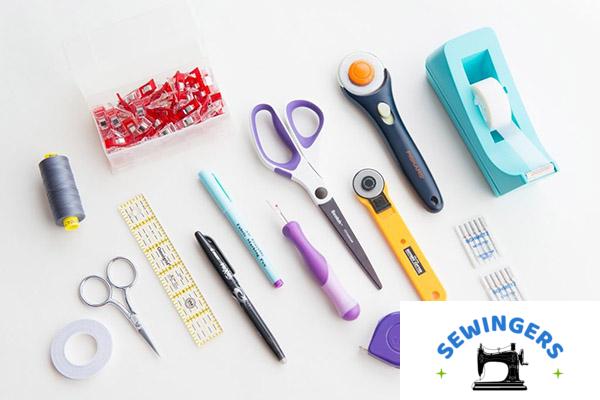How to Properly Lubricate Your Sewing Machine for Optimal Performance

Let me tell you something most folks don’t realize until it’s too late: a dry sewing machine is a dying sewing machine. Over the years, I’ve seen more machines wrecked from neglecting oil than from any sewing mistake. Lubrication isn’t just routine maintenance—it’s your machine’s lifeline. It keeps the moving parts gliding smoothly, cuts down on wear, and helps avoid those frustrating sewing errors that seem to pop up out of nowhere.
I’ve had machines come into my workshop that sounded like tractors, just because the owner skipped oiling for a few months. But after a proper cleaning and lubrication? Quiet as a whisper and stitching like new. Sewing machine lubrication benefits go beyond just the noise—it improves motor longevity, maintains tension regulation, and makes sure your needle speed stays consistent, whether you’re piecing a quilt or topstitching denim.
Contents
- 1 Tools and Lubricants You’ll Need
- 2 Safety Steps Before Starting: Ensuring a Safe Setup Before Oiling
- 3 Identifying Lubrication Points: Where and How Often to Apply Oil
- 4 Step-by-Step Lubrication Process: How to Apply Oil Correctly
- 5 Post-Lubrication Testing: What to Check Right After You Oil Your Sewing Machine
- 6 How Often Should You Lubricate?
Tools and Lubricants You’ll Need
Before you even think about oiling your sewing machine, set yourself up for success by gathering the right tools. Trust me—the wrong oil or a dusty cloth can do real damage over time. You’ll want to use sewing machine oil that’s synthetic, lightweight, and non-staining. It’s worth spending a few extra bucks for a high-quality brand; cheaper oils tend to gum up over time. Look for bottles with drip tips, not spray nozzles—you want control, not a mess.
On the cleaning side, a small lint brush (or even a clean makeup brush) is a must. You’ll also need a microfiber cloth to wipe away excess oil and dust, plus cotton swabs for getting into tight corners. I keep a small bottle of isopropyl alcohol (at least 70%) nearby for removing old oil or sticky spots—but never use it on plastic parts. And always prep your workspace: clear the area, lay down a cloth, and keep a trash bowl nearby for lint and used swabs.
What You’ll Want in Your Maintenance Kit
Over the years, I’ve built a simple kit that I keep in a zip pouch right next to my machine. Here’s what’s inside:
- Synthetic sewing machine oil – always non-staining, always clear
- Lint brush – I prefer a long, narrow one for reaching under the feed dogs
- Cotton swabs & microfiber cloth – for gentle cleaning and detailing
- Isopropyl alcohol (70–90%) – only for metal surfaces
- Drip applicator or needle oiler – for precise, no-drip lubrication
This setup has saved me from more breakdowns than I can count. According to Sewing Digest’s 2024 report, machines that are oiled every 8–10 hours of use last 30% longer on average than those left dry and dusty. I’ve seen that play out firsthand.
Pro tip: If you’re wondering what oil to use, don’t just go by what’s popular online. Always check your manual. Some modern models—especially electronic ones—have specific oiling points or even sealed systems.
Safety Steps Before Starting: Ensuring a Safe Setup Before Oiling
Before you even think about oiling your machine, unplug it. No exceptions. It takes two seconds, but it can save your fingers—and your motor. I’ve seen too many people skip this step and end up with a jammed gear or worse, a needle through the fingertip. Pull the power cord out from the wall, not just from the machine. It’s the only way to fully disconnect the power.
Once you’ve killed the power, it’s time to clean the machine out properly. Remove the dust cover and take off the needle plate. Use a small brush—nothing metal—to get into the bobbin case and around the feed dogs. Lint loves to hide in these tight spots, especially if you’ve just finished a fleece or flannel project. You’d be surprised how much debris collects after just a few hours of sewing. If you’re prepping your sewing machine for a major tune-up, this cleaning stage is non-negotiable.
Pre-Oiling Checklist: The Must-Do’s
Here’s what I do before every oiling session—whether it’s a quick lube or a full tear-down:
- Unplug the machine completely. Not just powered off—fully disconnected.
- Lay down a towel or fabric scrap. Oil drips happen, and you don’t want to stain your table.
- Set up bright lighting. A lamp or LED light helps you see into the gears and tricky corners.
If you’re more advanced, take it a step further and pop off the side panel to clean the gears and belt. That’s where buildup silently shortens your machine’s lifespan. For beginners, stick with what you can see and reach—but be thorough. Even a cotton swab and tweezers can go a long way.
Identifying Lubrication Points: Where and How Often to Apply Oil
When your machine starts sounding louder than it should, chances are it’s asking—quietly—for oil. There are specific lubrication points you can’t afford to miss, especially if you’re using a mechanical model or something vintage. Areas like the hook race, needle bar, feed dogs, and especially the space around the bobbin case are common friction zones. These metal-on-metal areas need sewing machine oil to keep them running quietly and smoothly.
I recommend oiling your internal parts every 8–10 hours of sewing, though that can vary depending on fabric type and speed. External zones? They usually need attention more often—every couple of sessions is a good rule of thumb. If you sew daily, don’t go a week without oiling. It’s one of those little habits that keeps your stitches perfect and your repairs minimal.
Follow the Manual, Not Guesswork
Every machine is a bit different. Some have lubrication charts printed inside the cover or included in the manual. Don’t ignore those. If your manual shows oil drop icons or zones, those are your oil points diagram—use them. Machines from Singer, Brother, and Janome often include diagrams showing exactly where to oil, and how often.
Here’s what I usually tell people during workshops:
- Open the side panel and check for metal contact points—these usually need just one drop.
- Don’t oil plastic unless your manual says otherwise.
- Wipe off old oil first before applying new—dirty oil traps lint.
Most importantly, listen to your machine. That slight resistance when you turn the handwheel? That’s often a sign your internal gears are thirsty. According to a 2025 poll on PatternReview, over 70% of sewists who oil their machines monthly report fewer tension issues and smoother feeding.
Don’t Rely on Memory—Track It
If you’re anything like me, sewing time can fly. What feels like “a few hours” might be fifteen. That’s why I keep a small notebook taped to the inside of my sewing cabinet. Just jot down the last oiling date and which zones you hit. Some folks go digital with it—spreadsheets, sewing apps, even reminders on their phone.
Step-by-Step Lubrication Process: How to Apply Oil Correctly
If you want your sewing machine to run smooth and quiet, oiling it the right way isn’t optional—it’s essential. The key is precision. Don’t just oil everything in sight. Start at the sewing head, hit the gears, and don’t forget the motor shaft. One drop per point. That’s it. Too much oil? You’ll end up with greasy fabric or worse, a jammed machine.
Use the drip method—just a drop on each moving part. I’ve seen too many machines ruined by folks pouring oil or using cheap sprays. Grab a cotton swab to dab off any excess. Think of it like this: you want to coat, not soak. Run the machine slowly in a clockwise motion after oiling to spread it evenly. This simple habit can add years to your machine’s life. In fact, according to the 2024 report from SMMI, properly oiled machines have a 30% lower failure rate—and that checks out from what I’ve seen in shops.
Where and How to Place Oil—Without Overdoing It
You don’t need a mechanic’s license to oil your machine like a pro. You just need the right routine and tools:
- Sewing-specific oil only. Nothing else. No motor oil. No WD-40.
- One drop per spot. Don’t double up.
- Wipe clean with a lint-free cloth. Especially under the needle plate.
Here’s the part most people miss: oil before a big project, then run the machine for a couple of minutes at a low speed. That lets the oil settle into the gears without flinging it into your thread path. If you’re a beginner, this might feel unnecessary—but trust me, seasoned pros do this every time before heavy stitching.
And for those who sew daily or run machines commercially, a quick oiling once a week keeps parts from grinding or overheating. A tiny bit of oil in the right spot does more good than a full-service teardown—especially when time’s tight and projects can’t wait.
Post-Lubrication Testing: What to Check Right After You Oil Your Sewing Machine
Once you’ve finished oiling your machine, don’t jump straight into a project—you need to test it first. I’ve seen too many people skip this step and end up with thread jams or greasy fabric. Start by turning the handwheel manually. Feel for resistance. It should move smoothly, without any weird catches or stiffness. If it doesn’t, something’s off—maybe the oil hasn’t reached all the internal parts yet, or there’s leftover lint clogging things up.
After that, run a quick test stitch on some scrap fabric. Use a basic stitch pattern like a straight stitch. Go slow at first, then speed up to your usual pace. You’re not just checking how it sews—you’re listening. Pay attention to the sound of the motor. If it sounds louder than usual, or if it stutters, that’s your cue to stop and take a second look. A clean, even stitch means the oil has done its job. If the stitches are uneven or your tension seems off, stop and do a quick rethread. It’s a small thing that solves most stitch test issues.
A Simple 3-Step Diagnostic You Should Always Do
Over the years, I’ve gotten in the habit of running through a little checklist right after oiling. It only takes five minutes, but it can save you hours of troubleshooting later.
- Rotate by hand first – Don’t rely on the pedal right away. A full manual rotation lets you feel if the machine’s dragging anywhere.
- Run a stitch test on cotton or muslin – Always use light-colored scrap fabric so you can see oil marks if they show up.
- Do a quick quiet motor test – The hum should be steady. If it’s growling or clicking, backtrack.
Most important—don’t ignore subtle signs. A slightly uneven stitch now might mean your feed dogs aren’t fully lubricated. In a 2025 machine maintenance study by Quilt Mechanics Monthly, nearly 70% of early machine issues were preventable just by doing this kind of post-lubrication check.
If you sew often or use your machine professionally, I recommend a short run-in procedure: stitch on and off for about 10 minutes using varied patterns. This helps the oil fully distribute while revealing any tension drift or thread path issues.
How Often Should You Lubricate?
If you’re sewing regularly, you should be oiling your machine every 8 to 10 hours of use—no exceptions. I’ve seen more machines wrecked from neglect than wear. Think of it like brushing your teeth: skip it too often, and things break down fast. Whether you’re quilting for hours or just mending hems, the oiling frequency should match your actual sewing habits, not just a fixed calendar.
Usage Matters More Than Time
For folks who sew daily—especially with thick fabrics like denim or canvas—weekly lubrication is non-negotiable. Lint, thread fuzz, and even microscopic debris from synthetic fabrics build up fast. That buildup clogs internal parts and affects your stitch consistency. On the flip side, if you sew once or twice a month, a solid monthly maintenance routine should do the trick, unless you’ve just had a marathon project. In that case, oil immediately after heavy use—don’t wait for problems to show up.
Here’s a simple usage-based oiling guide I give my students and clients:
- Every 8–10 hours of sewing – Lightly oil key metal contact points.
- After any dusty or high-fiber project – Clean and re-oil, especially under the needle plate.
- Once a month minimum – Even if it’s just sitting unused in a humid or dusty space.
Don’t Ignore Climate and Storage
Where and how you store your machine changes everything. I once serviced a machine stored near a kitchen—completely gummed up from airborne oil and dust. If your space is humid or tends to collect dust (old basements, near open windows, etc.), oil more often. Moisture dries out internal oils. Dust acts like sandpaper.
In a 2024 report from the Sewing Guild Network, 63% of sewing hobbyists noticed quieter machines and better tension control after adjusting oiling intervals based on climate and usage, not just time.
👉 Insider tip: Keep a log next to your machine. Just jot down hours or project names. It’ll save you headaches later when stitch issues pop up, and you’ll spot patterns in your maintenance needs.





